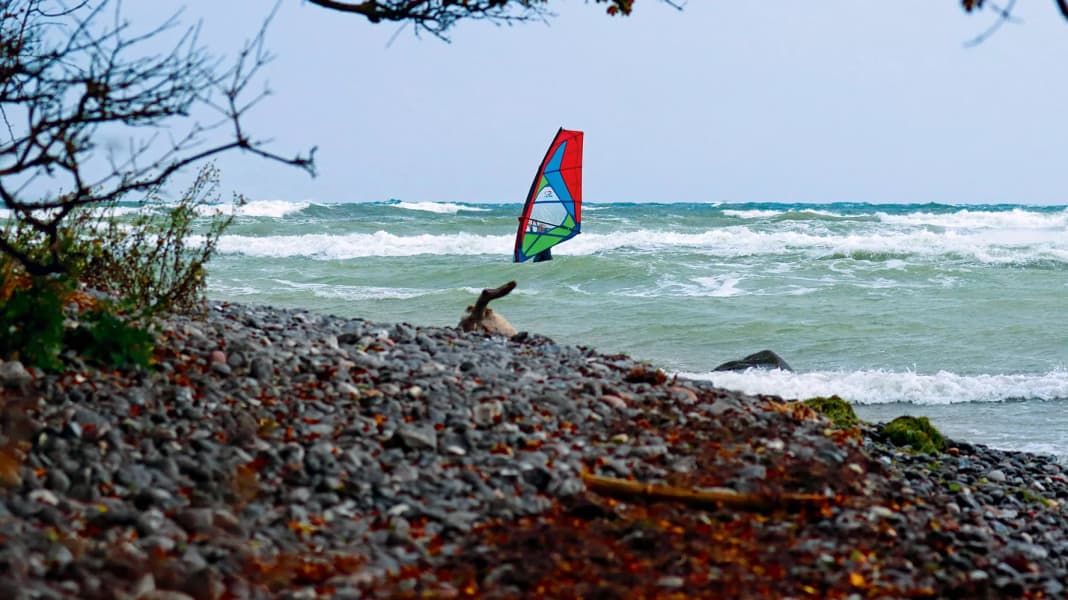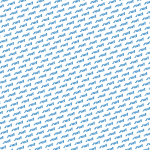Admittedly, this trip should have happened much earlier. There was plenty of evidence of how good Møn can be for windsurfing. But unfortunately, it's always easier to rely on the familiar and surf the few days of the year with a strong easterly wind on your doorstep - you know what you're going to get. Luckily, my mate Klaus knew how to put fleas in other people's ears. And because he didn't lack the necessary persistence, we were on the ferry to Rødby in the van the day after a good forecast popped up.
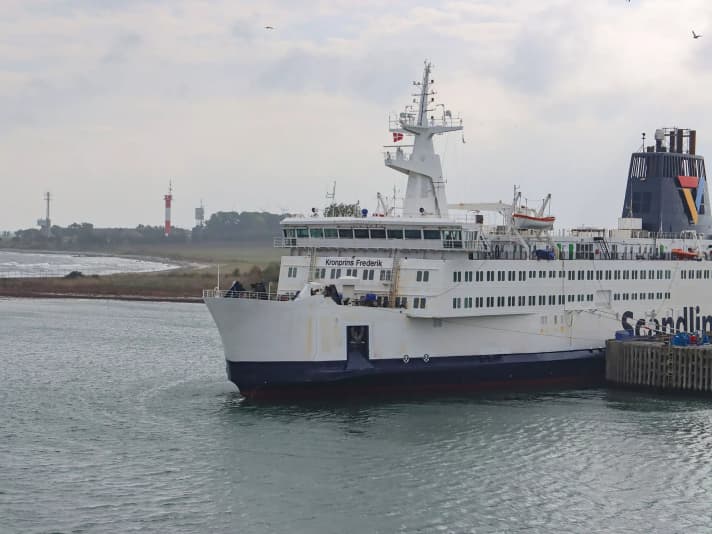
The crossing is no big deal, and if you're not travelling at peak times, you don't even have to pre-book a ticket for the 45-minute journey. From Rødby, we reach the first spot on Møn, Farø, in just over an hour. A flat headland divides the shallow bay into two halves. The offshore side is often frequented by kiters, but we can also enjoy a nice freestyle session on the windward side of the headland to warm up. A large standing area here ensures that even intermediates are safe, while further out some freeride and slalom fans are racing each other.
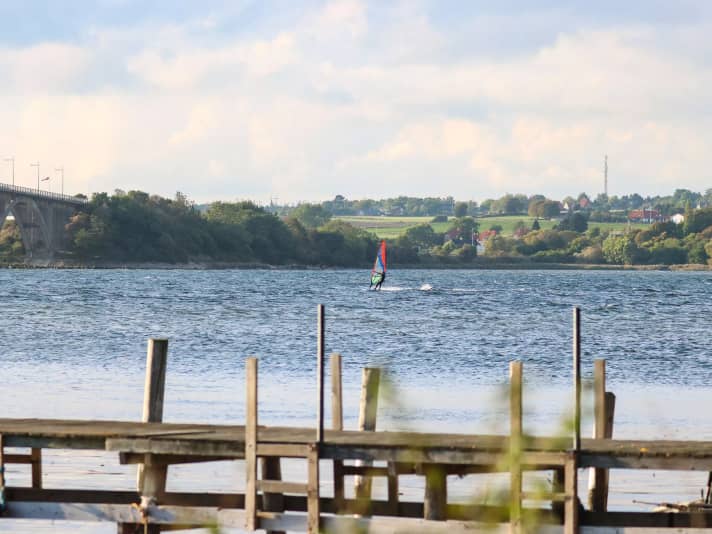
Tame West
Møn! Before we travelled here, we thought of steep cliffs and dense forests. But at least the western part of the island is the exact opposite: sandy bays, gentle hills and shallow sounds that separate the island from the mainland dominate the picture. Along the road towards the capital Stege, our gaze falls on Stege Bay, adorned with whitecaps. The clouds slowly disperse and the soft autumn light motivates us to squeeze in a second session before dark. The only problem: the southern end of Stege Bay is barely populated, so we can't find access to the water, a car park or a harbour for the time being. After a while, we discover the Moenbroen campsite, within sight of the imposing Queen Alexandrine Bridge. We knock on the door at reception and the nice lady allows us to use the campsite's lawn for parking and setting up.
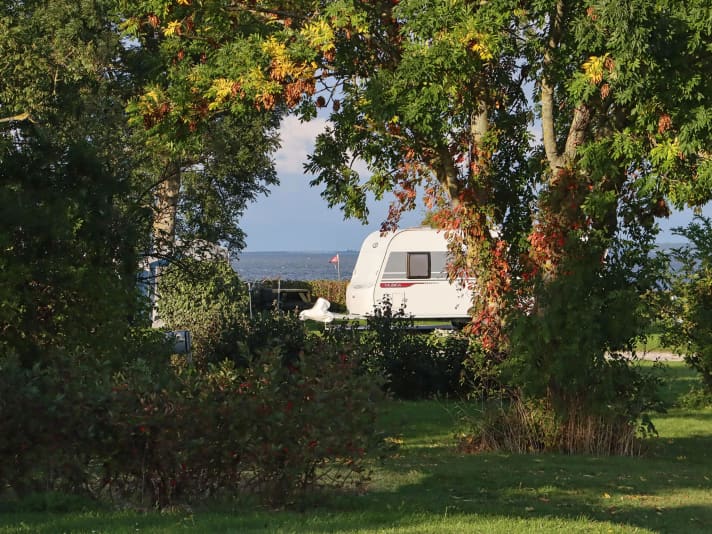
If we were only interested in flat water surfing, we would stay here: From here you have a view of the entire bay, a small sandy beach with a standing area allows you to get into the water and the easterly wind blows freely and constantly. We let off steam until nightfall. I wish we'd spent the night here too! Instead, we decide to head east late in the evening, as we want to explore the island's wave spots tomorrow. Despite the help of GoogleMaps, we can't find our campsite in the north. Instead, we get to know every dirt track and dead end on the island and wander around with our mobile phone torch like two small-time crooks on the prowl. We give up around midnight and spend the night in a car park in the middle of nowhere.
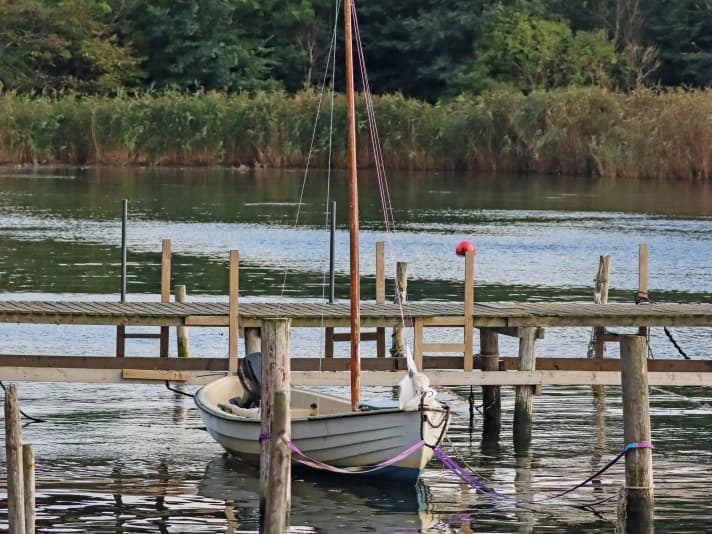
Nowhere
Sometimes chance plays into your hands. When we open the sliding door the next morning
sliding door the next morning, we can't help but hear the roll of the surf. A rushed muesli and a minute's walk later, we are standing on the beach and see Møn for the first time, just as we had expected: The first foothills of the cliffs rise upwind, the stony beach is littered with football-sized boulders and all kinds of driftwood. The conditions are too good to leave unsurfed, so we pull up the small cloths and stumble into the water. Further out, a nice wave runs over the sandbank, which is good for a few jumps and wave rides, but in view of the noticeable current and rather rustic ambience, it also becomes clear: Alebaek is not a relaxed spot for wave beginners.
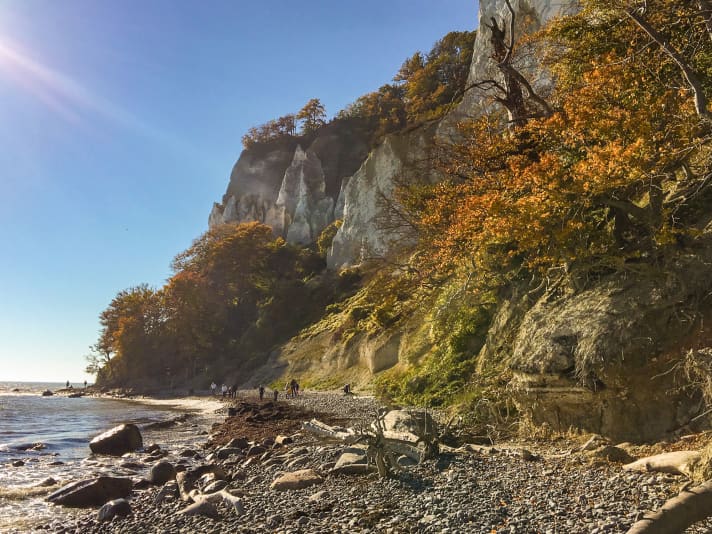
After two hours, we are finally drawn in the direction of Møns Klint. Similar to Cape Arkona on the island of Rügen, the cliffs here rise 130 metres into the sky. South of the landmark, the coast bends to the west - a glance at the map makes it clear that the waves have a real run-up here. Of course, the Danish surfing community has long been aware of this. Dozens of camper vans are parked in the woods at the spot and on the lawn of the nearby country house. The owners tolerate the occasional crowd on their doorstep - but caution is required to keep it that way. The session at the Møn Fyr lighthouse is clearly the highlight of this trip: powerful waves in North Sea format break over the rocky ground, and the view from the water alone is worth the trip: the white cliffs and lighthouse to windward, the dense forest on the shore, and lots of colourful sails in between.
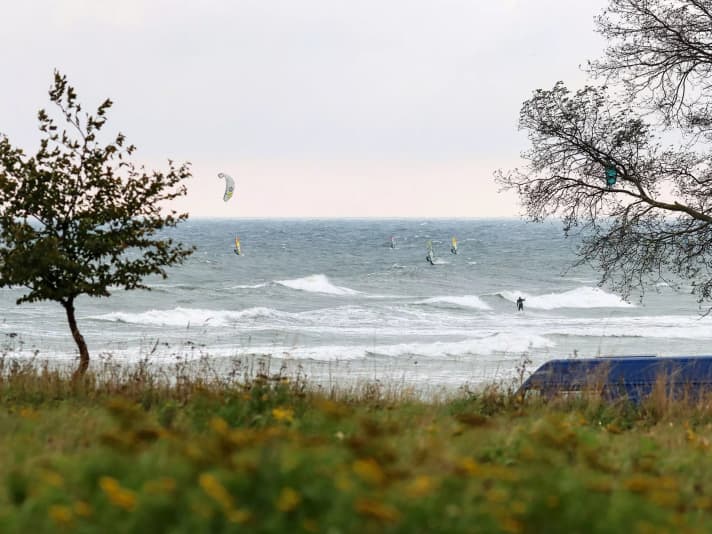
When we are on our way home in the evening with our bodies drained, we can't avoid a dansk øl, a Danish beer. Firstly, because the Asian chef on the market square in Stege hadn't skimped on the chilli. But above all, because a "skål" is more than appropriate on this island - even if it comes too late.
Spot Info Møn
Journey
You can get to Møn relatively quickly. From Puttgarden/Fehmarn you start with the Scandlines ferry and you can be in Rødby, Denmark, in around 45 minutes. From there, you can reach the first spot on Møn by land in around 50 minutes via the E47 motorway. The ferries from Puttgarden to Rodby sometimes run every 30 minutes; advance booking is only necessary at weekends and during the main holiday season.
Living & Camping
As almost everywhere in Denmark, there is a good range of holiday homes and accommodation on Møn, which can be booked through well-known providers such as Holiday partner , Novasol or also Dansk can book. A good tip here is also Feline Holidays The provider offers almost 100 holiday accommodations for every taste on Møn alone. There are also a number of campsites, some of which are right on the water or at a spot, which you can visit. You should book well in advance for the holiday/summer months.
Møn Camping - located on Harbolle beach in the south.
Camping Moenbroen - Campsite directly at the spot, with a large standing area and short distances.
Jetties Camping - Not far from the town of Stege and therefore centrally located. Pitches and cabins.
Møn Strand Camping - Situated in the north on the beautiful Ulvshale dune beach.
Keldby Camping - Central location on the island; pitches and small cabins for hire.
Camp Møns Klint -Situated in the east, not far from the spectacular cliffs; pitches and comfortable cabins.
Wild camping is generally prohibited in Denmark and punishable by heavy fines. Since Denmark was overrun by a veritable flood of campers in the coronavirus summers of 2020/2021, there has been increased enforcement. Please behave carefully, don't leave any rubbish behind and stay at the official campsites!
Wind, weather & neoprene recommendations
Møn is ventilated in different weather conditions and can therefore boast a good wind ratio. The best and most varied conditions can be found here with easterly winds. Long easterly wind phases often occur in spring and early summer, when the basic wind is significantly stronger due to the differences between the still fresh Baltic Sea and the warm hinterland - a 10-knot forecast quickly turns into a day with 15-20 knots when the sun is shining. With strong winds from ONE to OSE, the island's wave spots come to life.
But westerly or southerly winds are also possible on Møn. Depending on the wind direction, the water remains flat to moderate swell. In midsummer, a 4/3 wetsuit is sufficient in water temperatures of 18 to 20 degrees, in spring and autumn a warm 5/3 wetsuit with bonnet is appropriate. Especially in spring, it can still be unexpectedly fresh with an easterly wind right on the water, as the cold Baltic Sea cools the air down, while a few kilometres from the coast you can already be sitting in a T-shirt in the lee.
Surf shoes are definitely advisable, as some beaches are rocky and even in supposedly sandy bays there are always a few boulders hidden in the water.
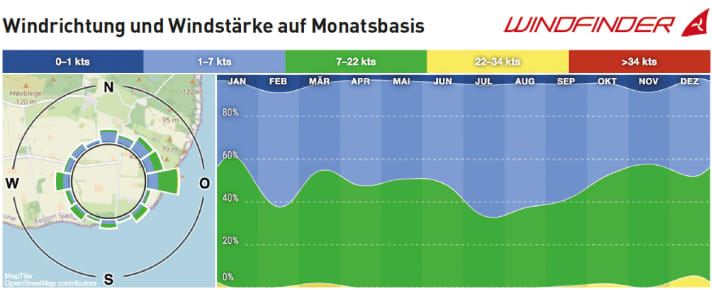
Waves & Tides
Like everywhere on the Baltic coast, the tides hardly play a role on Møn. Waves mainly occur here when there is a long-lasting easterly wind. The biggest waves occur when the wind blows from the east, pushing the waves past Bornholm over several hundred kilometres to the coast of Møn. If the wind is blowing from the east at a moderate 20-25 knots, some spots can experience waist- to head-high waves, and in stormy weather you could be forgiven for thinking you were in the North Sea - logo-high sets are easily possible here.
Westerly winds, on the other hand, only bring small swells, and only strong south to south-south-westerly winds are likely to provide moderate surf conditions at spots such as Rytsebaek and Oddermose Strand on the south coast - although this is without guarantee, as we were unable to visit these beaches.
Surf schools & shops
Windsurfing on Møn requires your own equipment, as you need to be somewhat mobile. There are with Møn Surf There is also a kitesurfing and windsurfing school on site, but this mostly offers beginners' courses.
Alternative programme
A hike along the cliffs (Møns Klint) is definitely not to be missed. On windless days, you can also SUP around them and get the best view of the cliffs. There are bike trails and hiking paths above the cliffs. A visit to the small town of Stege is also a welcome change. And if you're looking for culture and variety, Copenhagen is around 1.5 hours away.
Good to know
Seaweed is an issue in the summer months, as it is at many spots in the Baltic Sea. Appropriate fins are advisable.
We explored these spots on Møn:
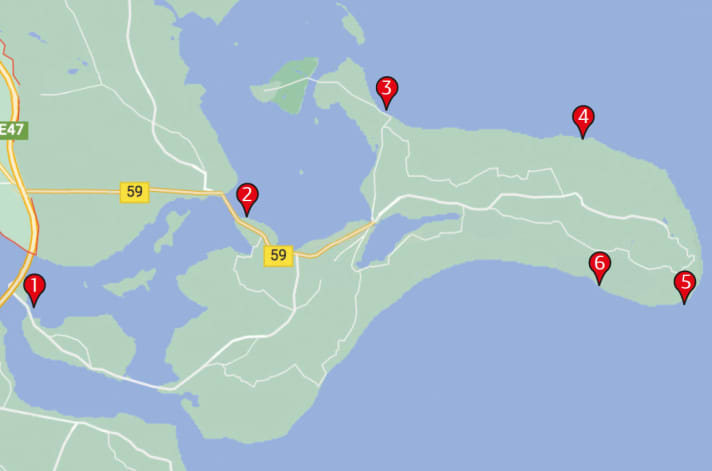
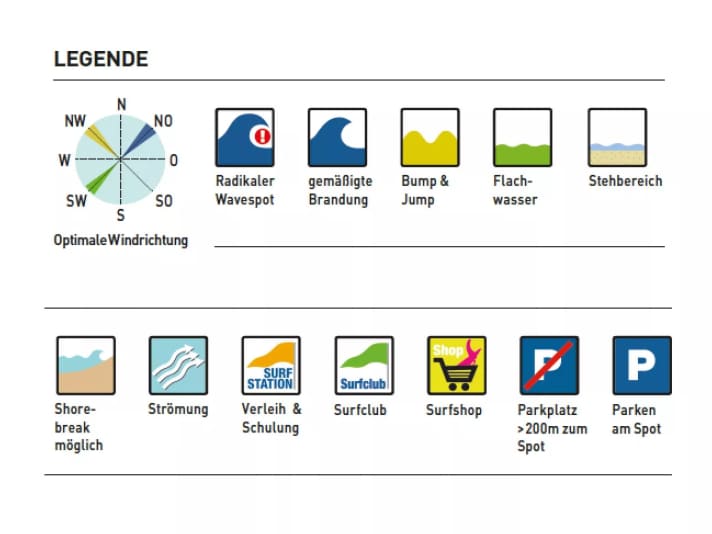
1. farø
Farø is the first spot on Møn, not far from the E47 motorway. A narrow headland divides the spot into two areas: in both westerly and easterly winds, you can either surf small choppy waves on the onshore side or hone your manoeuvres and freestyle tricks on the offshore side in mirror-smooth water. You can park directly on the water on both sides of the road, but here you are also unprotected and fully exposed to the wind. The spot is ideal with a very constant wind from east to north-east, giving you plenty of space for long shots on the windward side of the headland. A large standing area along the shore and an onshore wind ensure that even intermediates can practise safely here. The entrance is largely sandy, but there are always large boulders in the shore area that can be dangerous for fins and foils - so if in doubt, it is better to run out a few metres further. The conditions on the water are then absolutely safe, even in strong winds there are still small, steep chops.
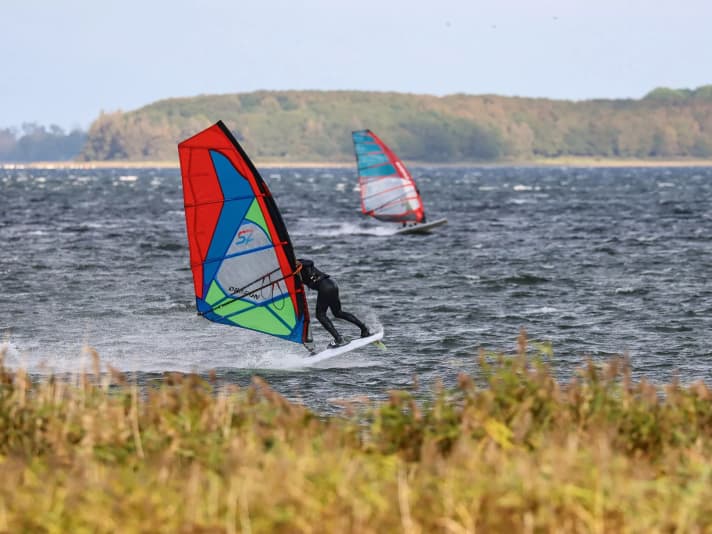
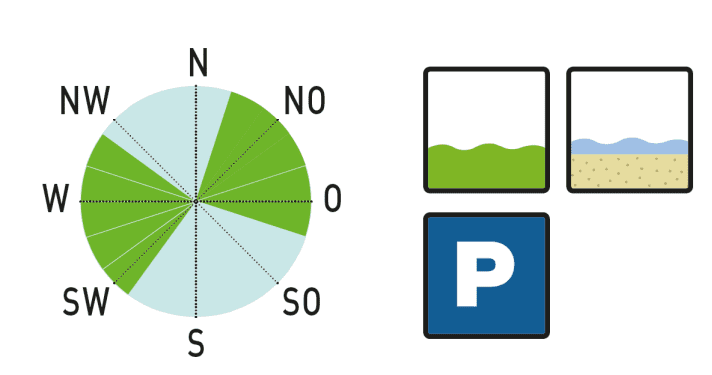
2. moenbroen
Another great shallow water spot can be reached via the Moenbroen campsite. There is no official car park, so if you only want to go on the water for the day, you should ask for permission at reception beforehand and can then enter via the campsite. If you rent a car, you can overlook the large bay of Stege from the campsite and walk down to the beach with your equipment. Easterly to northerly wind directions are ideal here, they come in freely and constantly. There is also a standing area on the shore, so no one gets lost here in onshore north-easterly winds. The conditions themselves are similarly harmless as in Farø, with small wind waves that make small jumps possible, but do not pose any major problems for those learning to jibe. A little caution is only required in strong easterly winds, when there is a noticeable current through the Ulvsund towards the large Møn bridge to leeward and it becomes increasingly choppy in the canal.
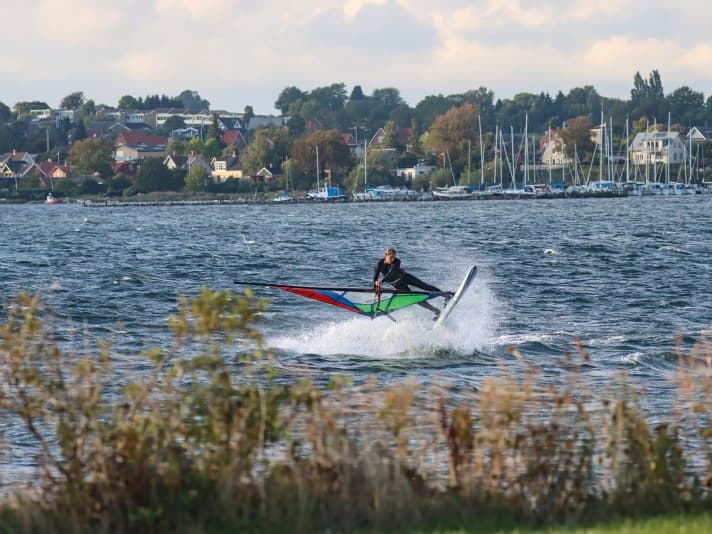
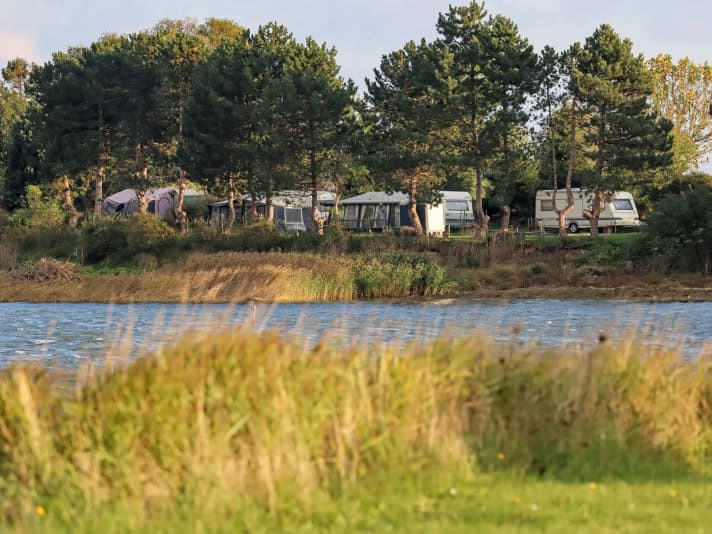
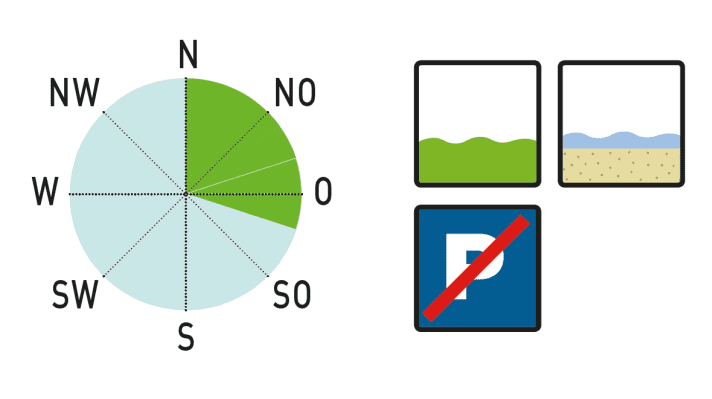
3. ulvshale
Ulvshale is quite versatile. In the long bay, the wind direction determines what to expect. An offshore westerly wind flattens the water and is somewhat gusty, so ideally you should head towards the eastern end of the beach, where the wind is more sideways. East and north winds bring typical bump & jump conditions, only strong north-easterly winds shovel some surf into the bay, which, however, arrives more moderately than in Møn Fyr and Alebaek, for example. We would therefore recommend Ulvshale to anyone looking for more moderate conditions. There is a small village with some infrastructure, accommodation and a large campsite in the dunes. The beach slopes gently downwards, creating a standing area, with easterly winds coming in onshore or cross-onshore, depending on which part of the beach you are on, making it impossible to drift here. The waves then break moderately over the sandbanks and are suitable for small jumps with wind from the right. These can usually be ridden backside. As almost everywhere on Møn, you are not immune to some larger stones on the largely sandy/pebbly beach.

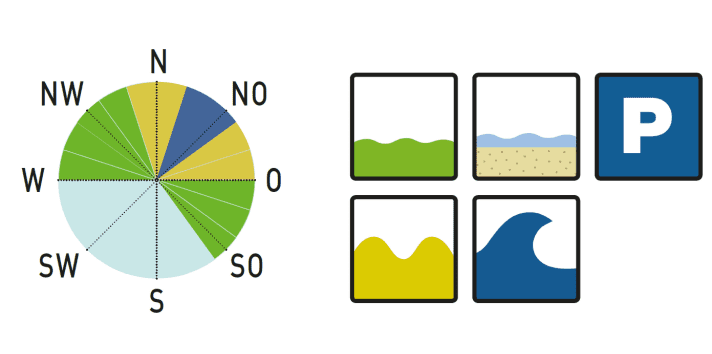
4th Alebaek
The spot in the middle of nowhere! While the western part of the north coast near Ulvshale is quite flat, it becomes increasingly steep and rocky towards the east. The spot at the small village of Alebaek can be reached via Alebaek Strandvej, the road ends at a small car park, from where you can reach the "beach" lined with stones and driftwood via a small path. Sometimes there is a bit of a shore break that needs to be mastered. Winds from the east to east-northeast arrive here free and largely sideshore. You have a clear advantage when entering with shoes, as you then have around 50 to 100 metres to aim for one of the waves breaking over a sandbank. Depending on the wind strength, the wave reaches a height of one to two metres, but breaks powerfully in places and allows for powerful turns to windward and leeward. The current over the sandbank is noticeable, which is another reason why this spot is more of a tip for experienced surfers who like to go out on the water when the wind blows from the right and off the beaten track. The wind window in Alebaek is quite small; if it turns a few degrees to the south, the steep coast to windward shields the wind. If it blows too northerly (wind angle below 80 degrees), the waves run very parallel and frontside rides become increasingly difficult.
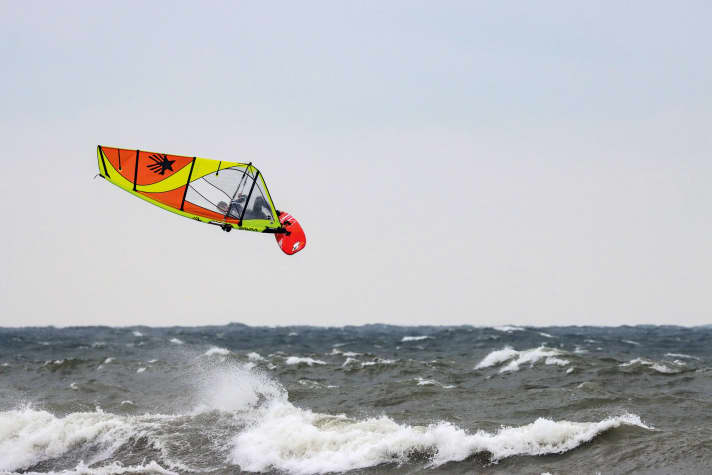
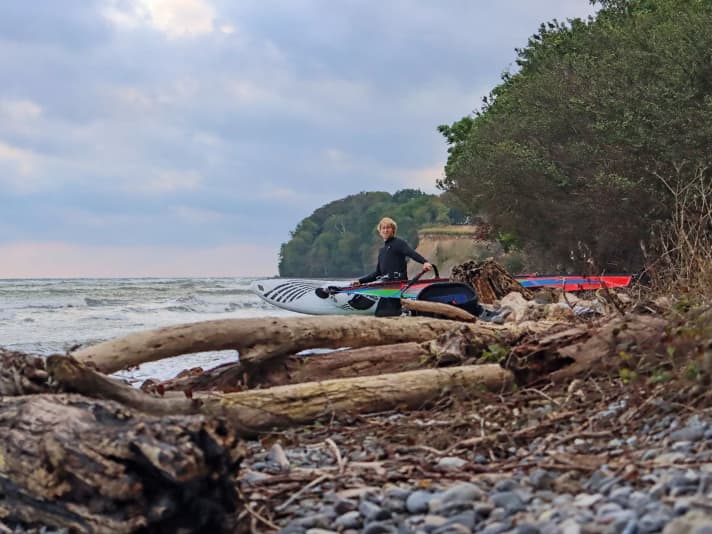
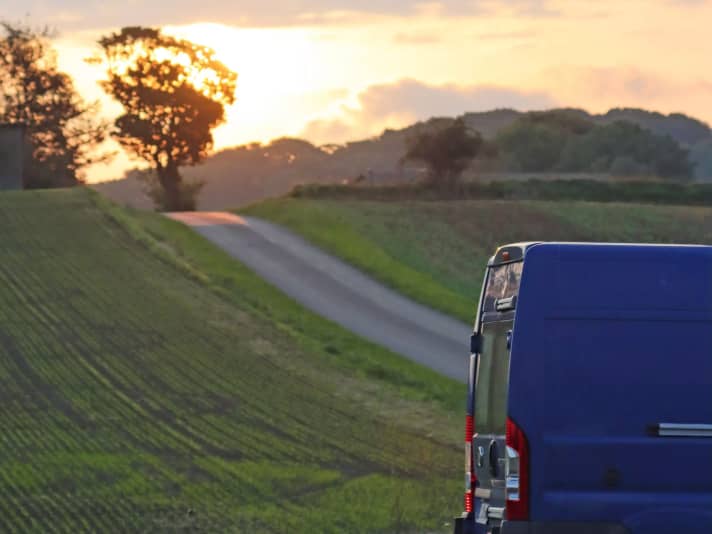
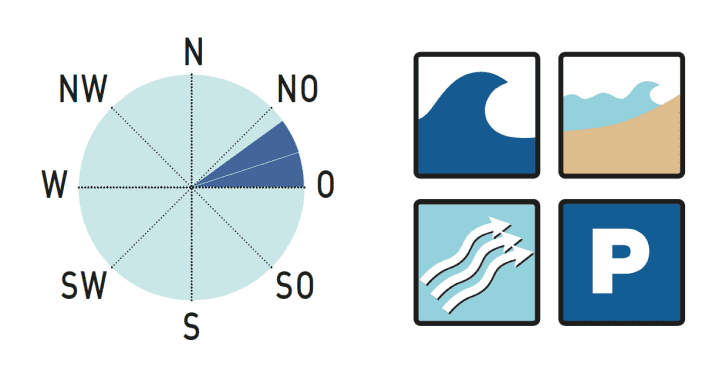
5. Møn Fyr/Møns Klint
The spot not far from the Fyr lighthouse on the south-eastern tip of the island is certainly one of the best wave spots in the Baltic Sea - it is also sometimes called Møns Klint due to its proximity to the famous chalk cliffs. To make the trip here worthwhile, the wind should be blowing from the east, as the waves slowly get going from 20 knots. You can reach the spot via Hampelandsvej and park in a small wood right next to the spot. There are only a few parking spaces available here and if the forecast is good, space is limited - so don't spread out too much. Sometimes the landowner at the entrance to the grove allows you to park in the meadow. The same applies here: keep your feet on the ground, leave your barbecue and camping chairs in the car and use the official campsites for overnight stays and toilets so that this access can be maintained. If you enter via the meadow to windward, you should watch out for some large boulders on the first 50 metres, which have already killed a few Finns. An easterly wind blows sideways from the left and, if strong enough, creates official waves that break cleanly over the offshore reefs.
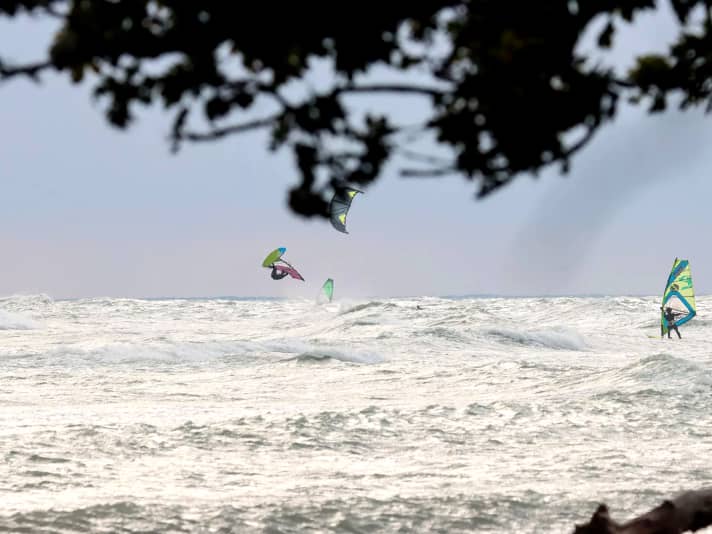
Møn Fyr is suitable for riding downwind as well as for jumping, and in stormy weather the waves can get quite big. However, it is better not to ride the waves right up to the shore, as there are also numerous boulders in the water here. Because the current is noticeable and the coast bends further downwind to the north, you can get into trouble if your equipment breaks. Wave novices don't usually have a really relaxed surf here in strong winds. If the wind takes a southerly turn, it's definitely worth moving to Klintholm Havn, just 2.5 kilometres away.
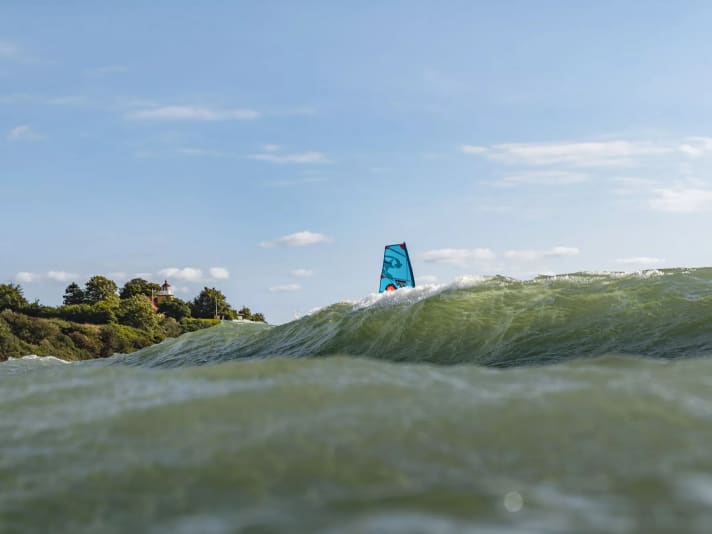
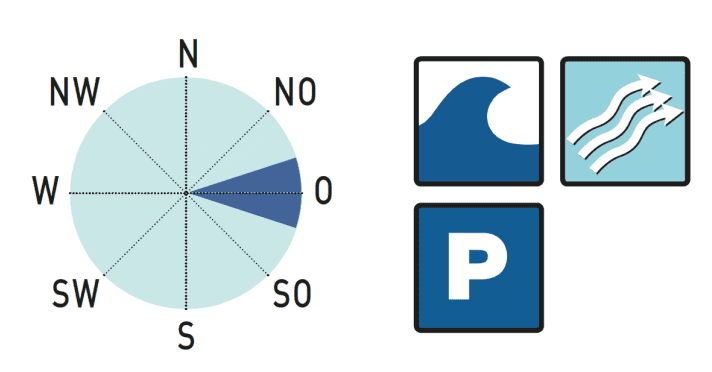
6. Klintholm Havn
Klintholm Havn is a beautiful spot, a small harbour divides the long sandy bay. When the wind blows from east-south-east to south-east, moderate surf waves run into the bay upwind, which break much less dangerously on sand than at the Møn Fyr spot. You can park and board directly at the harbour, where there is also some infrastructure such as toilets, restaurants and a small supermarket. The waves are nicely sorted by the harbour's small breakwater, which is why the beach section downwind can also be a lot of fun - even if it's just to surf a few lines with a SUP or surfer. The Danish scene regularly gathers here, so you're never alone on the water. The current can be noticeable here, but the bottom line is that even wave novices can surf more relaxed here than at Møn Fyr. Westerly winds are also possible here, but then it usually remains bump & jump conditions with wind from the right. The local surf school Møn Surf rents out SUPs and offers courses.
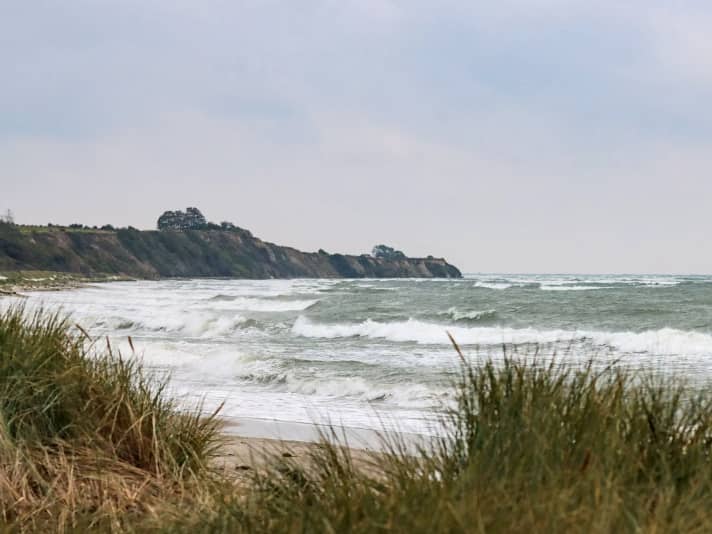
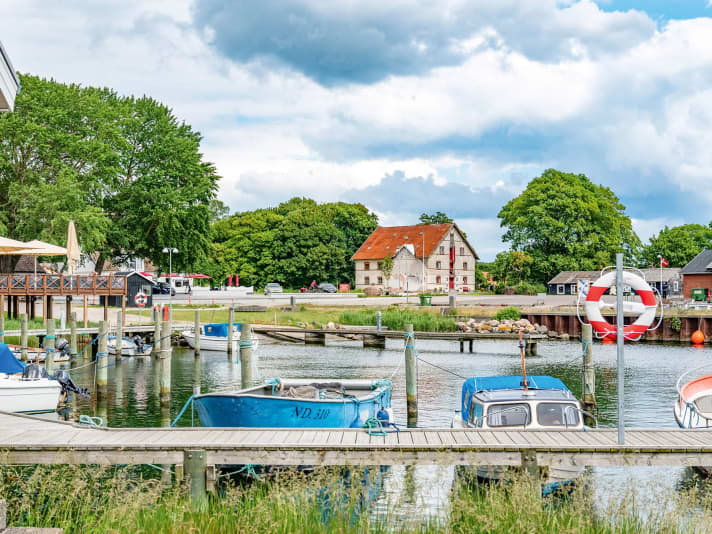
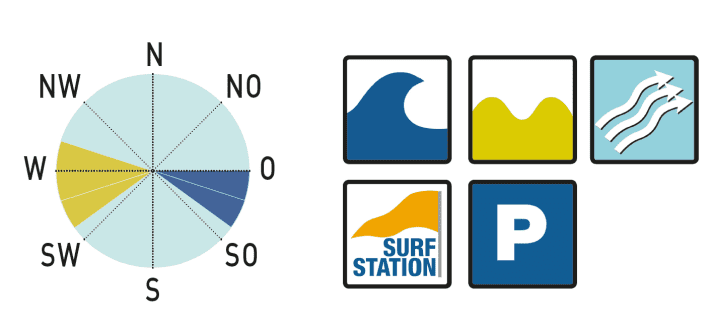
You can find out more about Denmark's windsurfing spots here:
